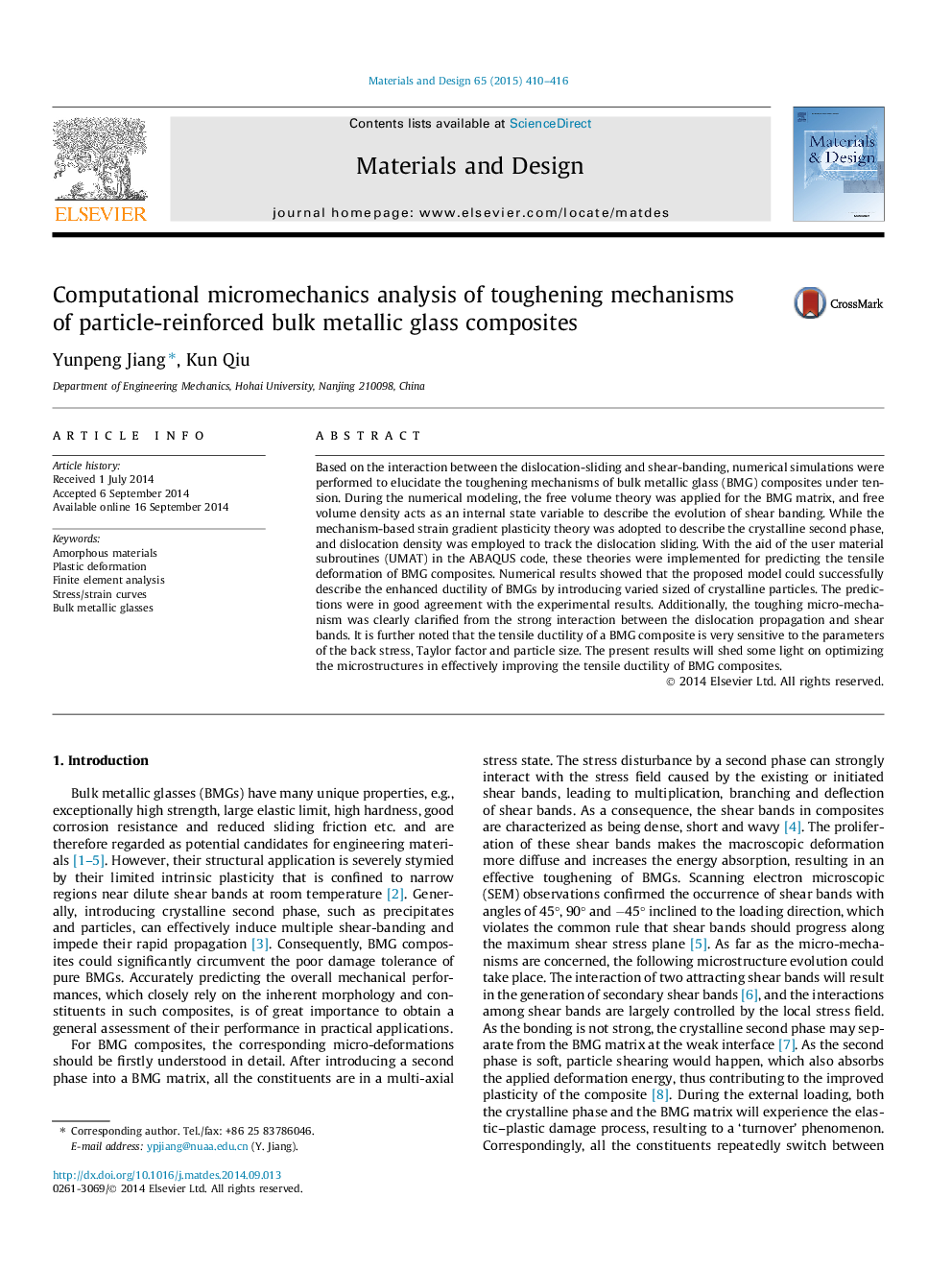| Article ID | Journal | Published Year | Pages | File Type |
|---|---|---|---|---|
| 828821 | Materials & Design (1980-2015) | 2015 | 7 Pages |
•Modeling is performed to elucidate the toughening mechanisms of BMG composites.•Free volume theory and strain gradient theory are implemented into ABAQUS code.•The present method is verified, and parameter analyses are fatherly conducted.
Based on the interaction between the dislocation-sliding and shear-banding, numerical simulations were performed to elucidate the toughening mechanisms of bulk metallic glass (BMG) composites under tension. During the numerical modeling, the free volume theory was applied for the BMG matrix, and free volume density acts as an internal state variable to describe the evolution of shear banding. While the mechanism-based strain gradient plasticity theory was adopted to describe the crystalline second phase, and dislocation density was employed to track the dislocation sliding. With the aid of the user material subroutines (UMAT) in the ABAQUS code, these theories were implemented for predicting the tensile deformation of BMG composites. Numerical results showed that the proposed model could successfully describe the enhanced ductility of BMGs by introducing varied sized of crystalline particles. The predictions were in good agreement with the experimental results. Additionally, the toughing micro-mechanism was clearly clarified from the strong interaction between the dislocation propagation and shear bands. It is further noted that the tensile ductility of a BMG composite is very sensitive to the parameters of the back stress, Taylor factor and particle size. The present results will shed some light on optimizing the microstructures in effectively improving the tensile ductility of BMG composites.
